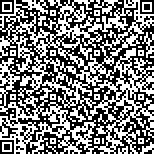下载中心
优秀审稿专家
优秀论文
相关链接
首页 > , Vol. , Issue () : -
摘要

伴随着全球变暖,极端降水格局变化显著,分布面积广且处于生长旺盛期的我国人工林将如何响应气候变化,其碳汇功能的趋势预测,以及相应的经营管理决策,迫切需要快速、准确监测森林生长的方法。本研究以17年生杉木中龄林为研究对象,采用无人机激光雷达(UAV-LiDAR)于2019年2月至2020年2进行了半年周期性监测。结合地面调查数据对比了3种基于UAV-LiDAR参数的单木地上生物量(AGB)估测方法,分别为树高冠幅回归法(HCD)、胸径-树高回归法(D-H)、胸径-树高冠幅回归法(D-HCD),并进一步估测杉木林半年为周期的树高、胸径和AGB的干湿季节生长变化。结果表明,D-HCD法估测杉木单株AGB结果最优(R2为0.77,RMSE为15.99 kg),即采用UAV-LiDAR提取的树高与冠径估测胸径,并将其与树高代入异速生长方程计算AGB。单株年AGB变化量(ΔAGB)的实测与估测R2为0.64,RMSE为1.87 kg,相对误差rRMSE为29.74%;单木上推至样方尺度,单位面积ΔAGB估测相对误差有所降低,rRMSE从29.74%下降到17.10%。研究期间,春夏季的日均温比秋冬季高7°C,降雨量却超过秋冬季的3倍,降雨的季节分配严重不均。杉木生长也因此表现出十分明显的干湿季节差异,湿季和干季平均树高生长量分别为0.50 m和0.13 m,生物量增加量分别为5.12 kg和1.37 kg。随着径阶的增加,中龄杉木春夏季和年ΔAGB呈递增趋势,即个体越大,生长量越具有优势,而小于平均水平的个体,生长量则明显降低。
With global warming, the pattern of extreme precipitation has changed significantly. How China"s plantation, which are widely distributed and in a rapid growth stage, will respond to the climate change, the prediction of their carbon sink functions, and the corresponding management decisions urgently need methods to monitor the growth quickly and accurately. In this study, the 17-year-old middle-aged Chinese fir plantation was monitored three times with a period of semi-annual using UAV LiDAR, from February 2019 to February 2020. Combined with the ground survey data, three methods for estimating the individual tree aboveground biomass (AGB) by UAV-LiDAR parameters were compared, namely, height and crown diameter regression (HCD), diameter at breast height-tree height regression (D-H), and diameter at breast height- tree height and crown diameter regression (D-HCD). Then, the seasonal growth changes of tree height, diameter at breast height, and AGB were further estimated in a six months interval. The results showed that the D-HCD method was the optimal method for estimating individual AGB of Chinese fir (R2 = 0.77, RMSE = 15.99 kg). The D-HCD method refers to the tree height and crown diameter extracted by UAV-LiDAR were used to estimate the diameter at breast height (DBH), then the AGB were calculated by substituting the DBH and tree height into allometric equation. Annual and even seasonal growth changes of Chinese fir plantation in the fast-growing period can be accurately monitored by UAV-LiDAR. The average total accuracy of individual tree identification in 16 plots reached 0.927, the estimated RMSE of tree height was only 0.13 m, the R2 between the estimated and measured of annual individual AGB change (ΔAGB) was 0.64, the RMSE equaled to 1.87 kg, and the relative error rRMSE was 29.74%. Upscaling the individual to plot, the relative error of ΔAGB estimation reduced, rRMSE decreased to 17.10%. During the study period, the average daily temperature in spring and summer was 7°C higher than that in autumn and winter, while, the rainfall was more than three times that in autumn and winter. The seasonal distribution of rainfall in this year was seriously uneven, the growth of Chinese fir also showed obvious differences in dry and wet seasons. The average growth of individual tree height in wet and dry seasons was 0.50 m and 0.13 m, and the biomass increment was 5.12 kg and 1.37 kg respectively. The individual ΔAGB increased with the DBH class during the annual and seasonal growth, that means, the larger the individual, the more advantageous the growth, especially the growth of the dominant trees in the dry season were significantly higher than that of other diameter classes, showing stronger drought tolerance. However, the growth of individuals whose DBH are much smaller than the average level almost stopped.

